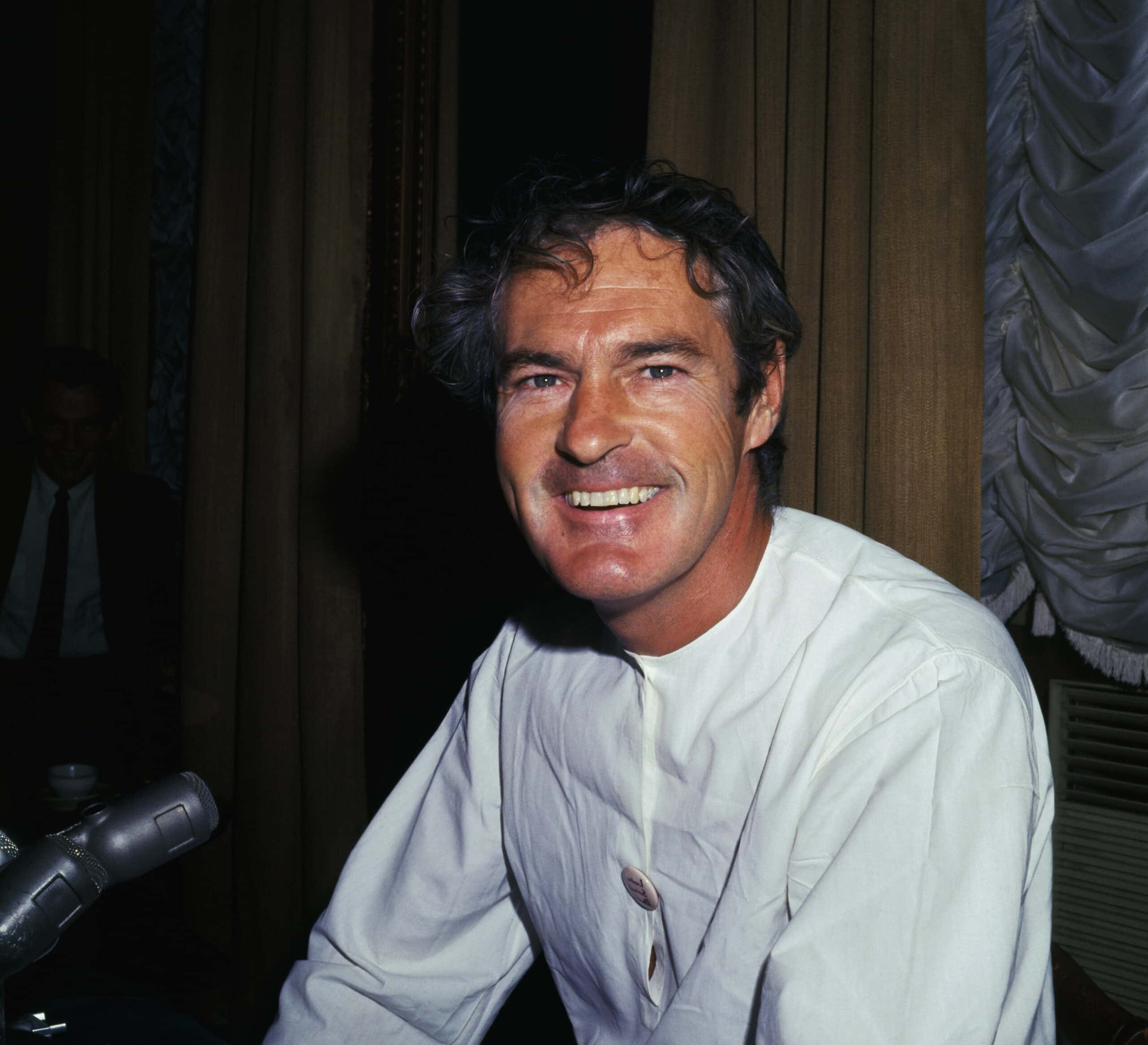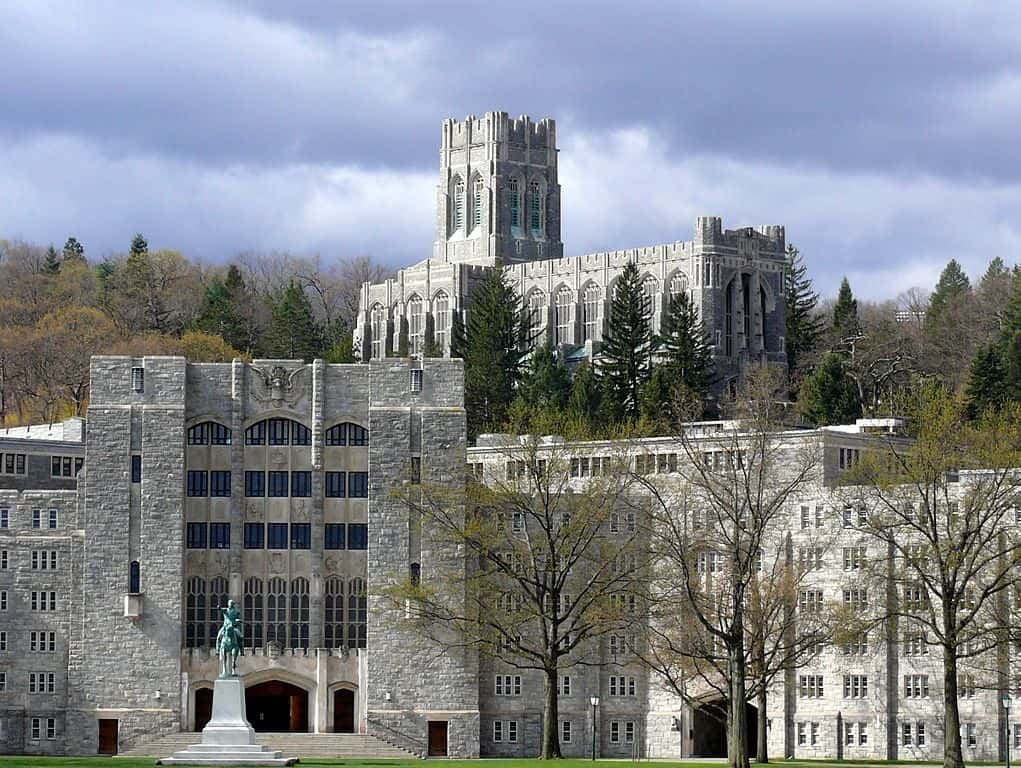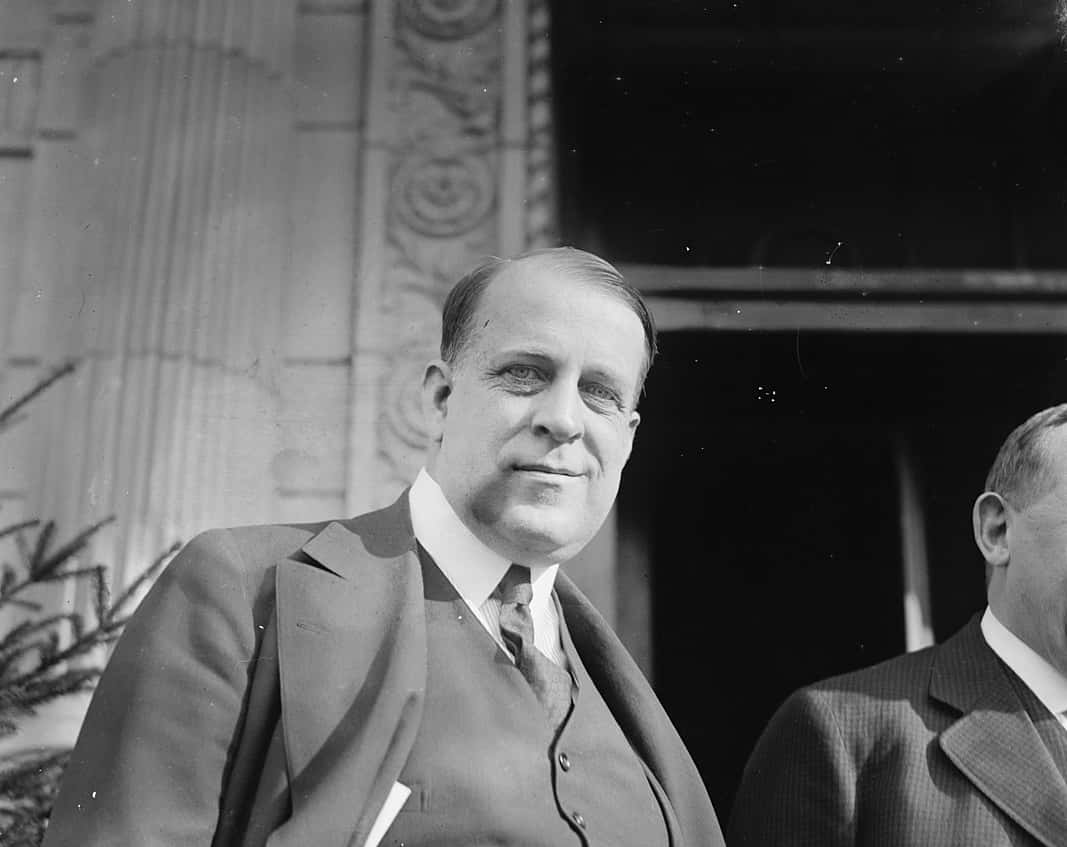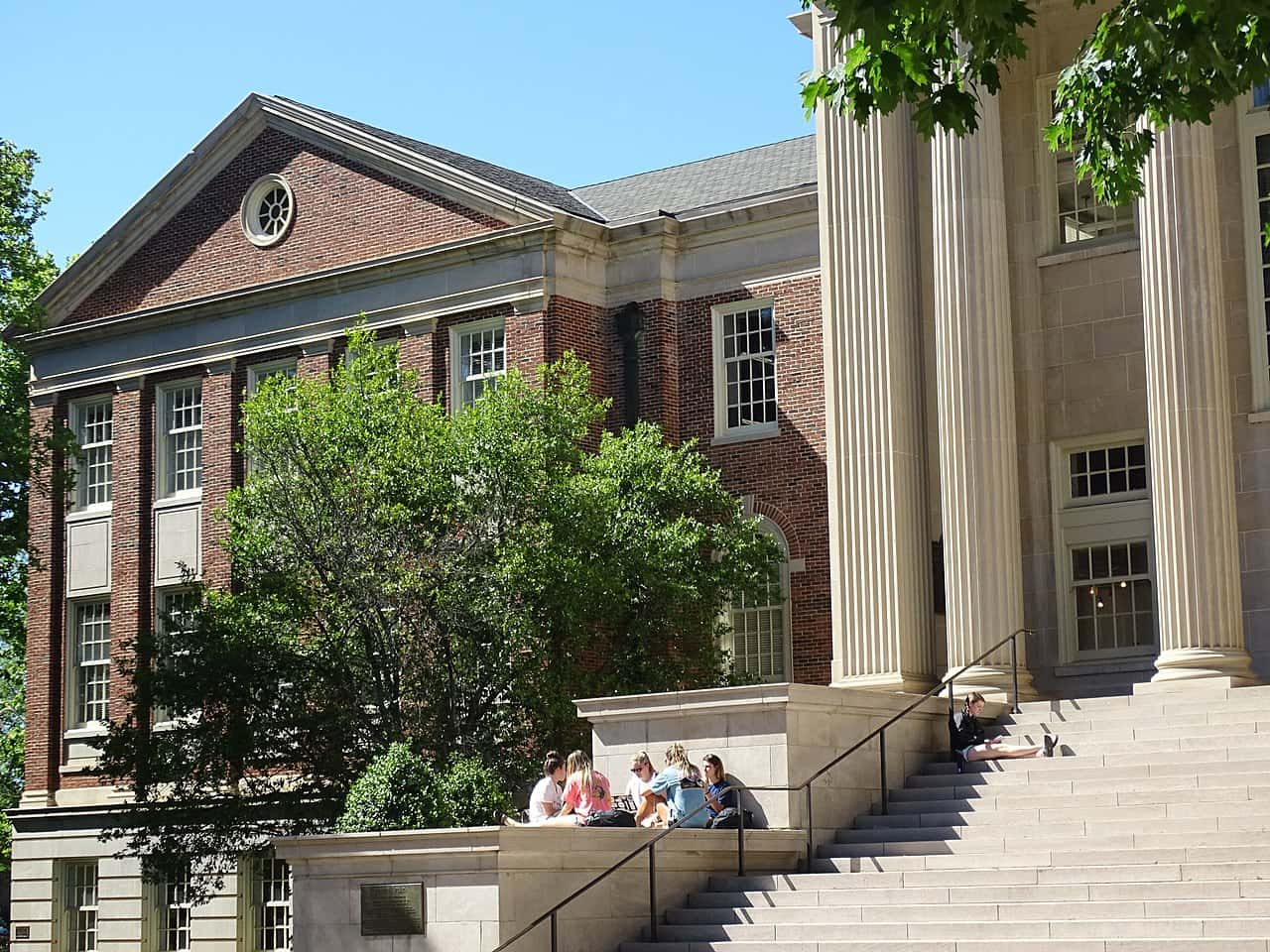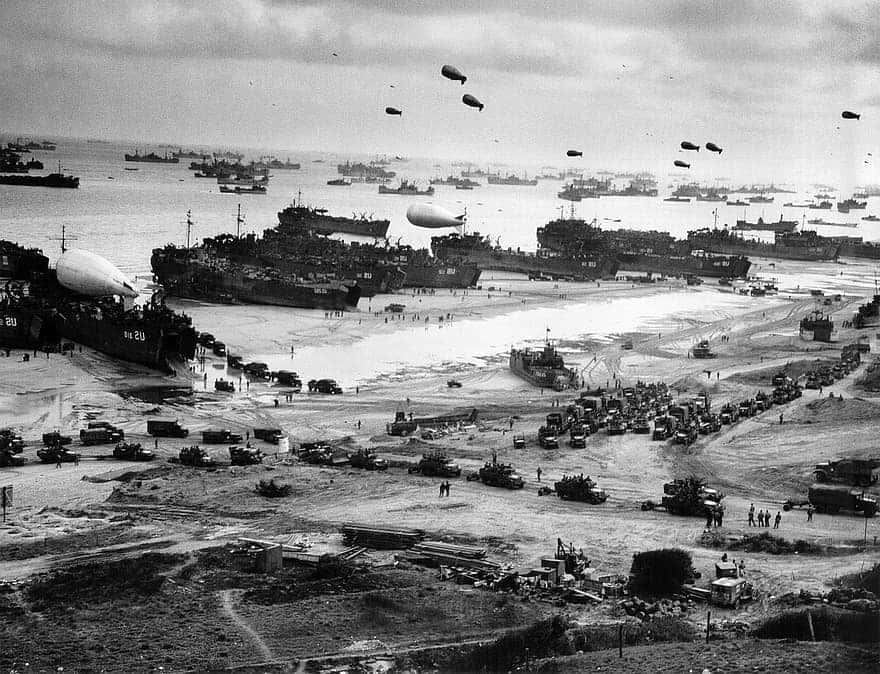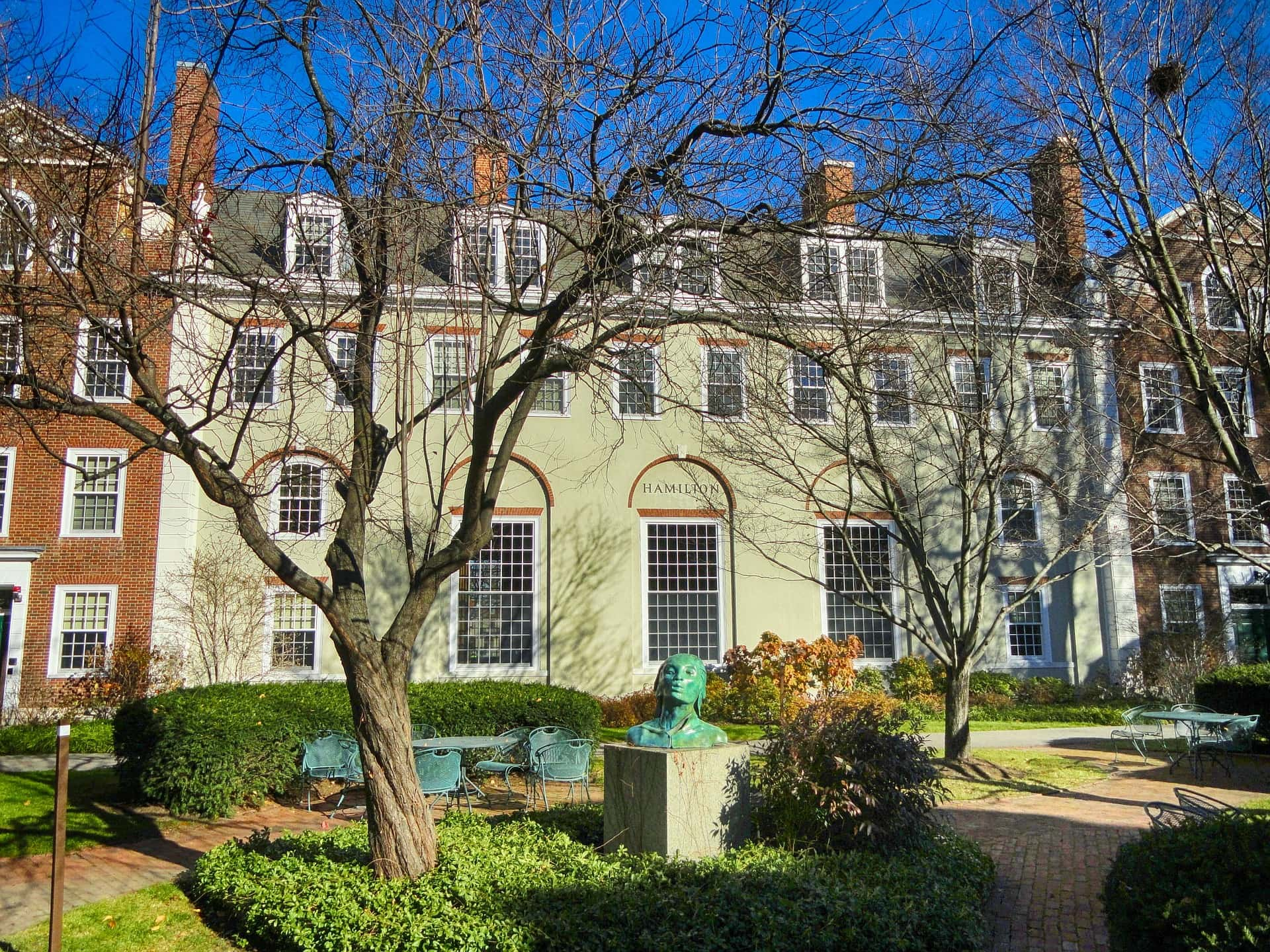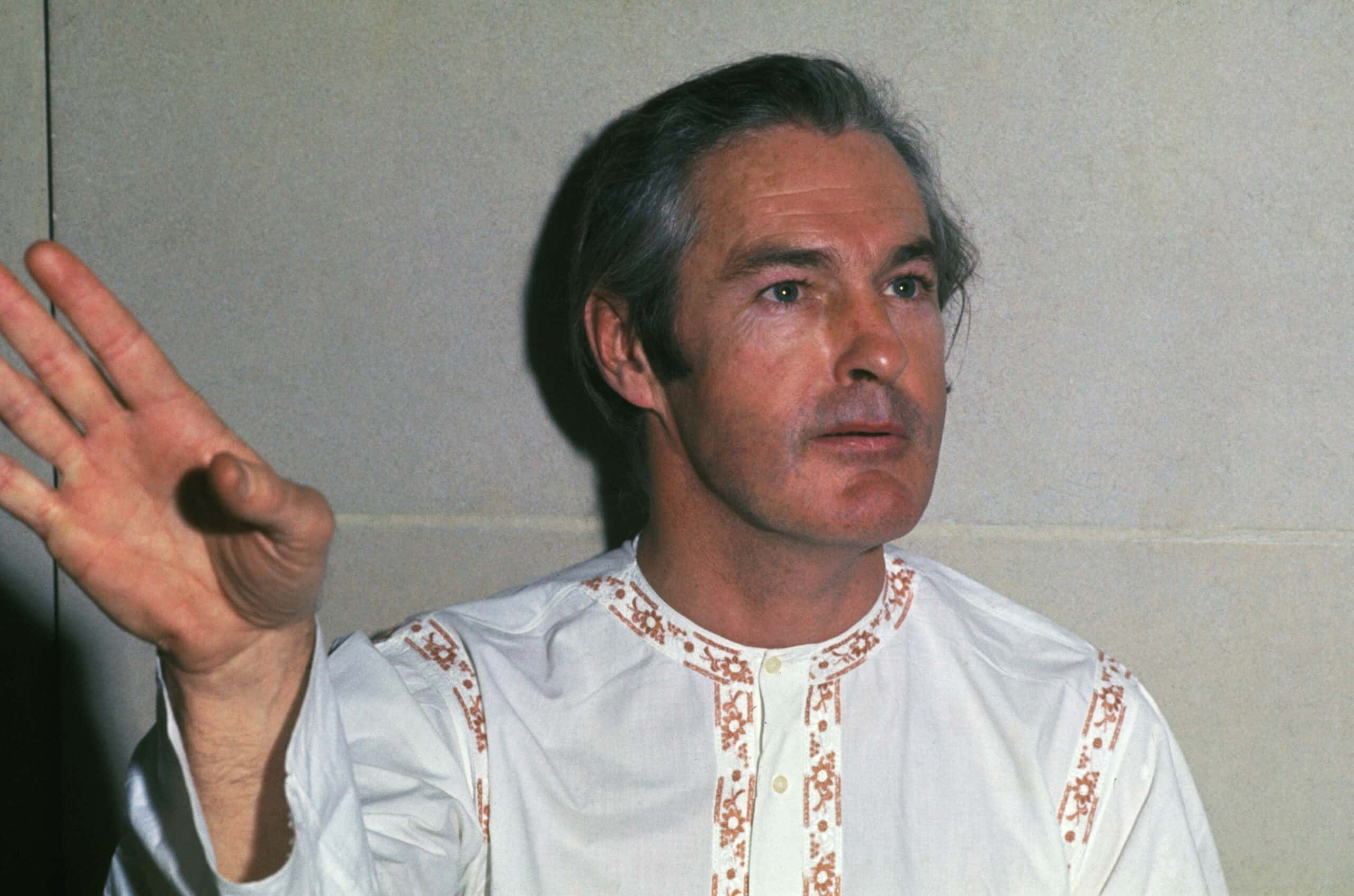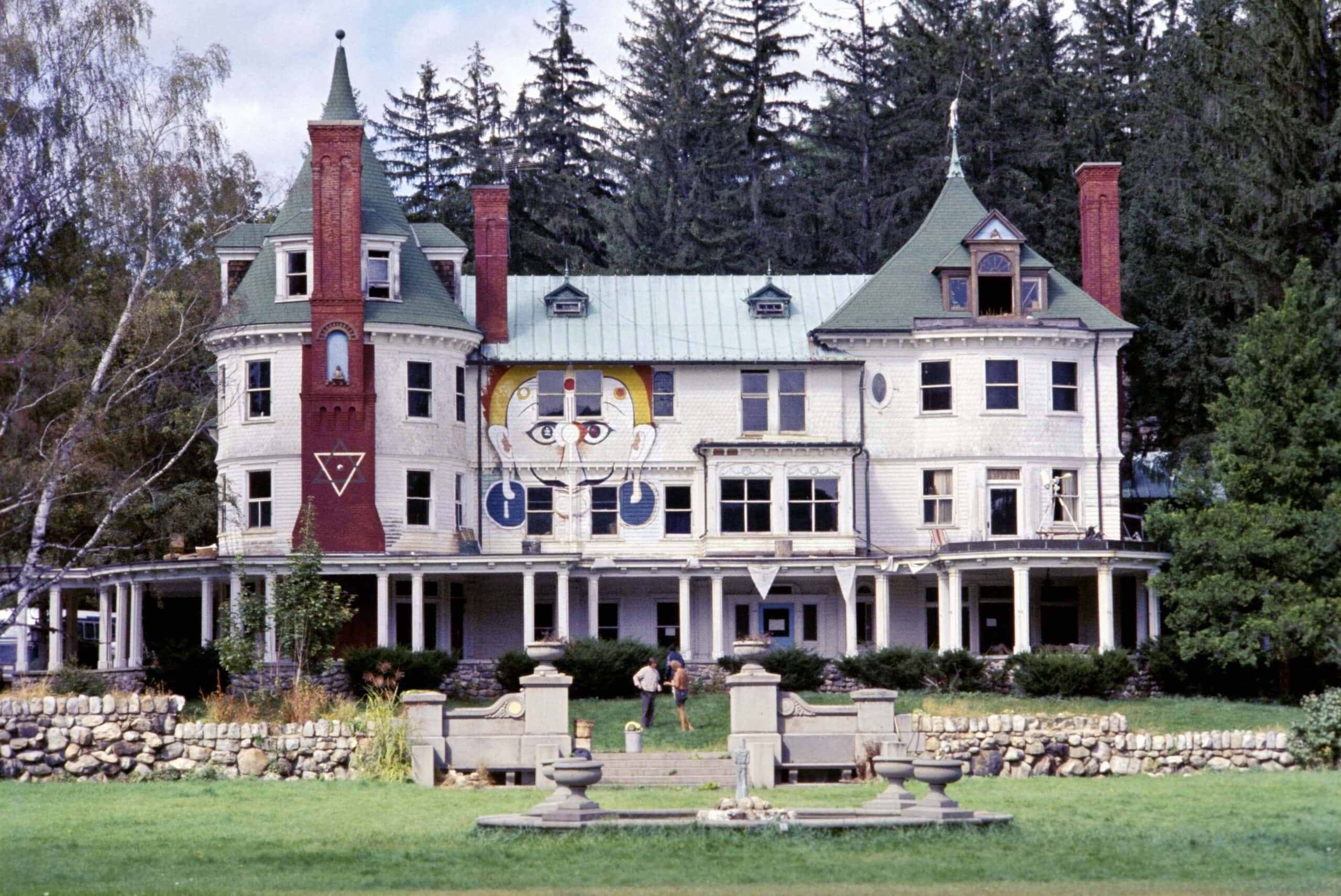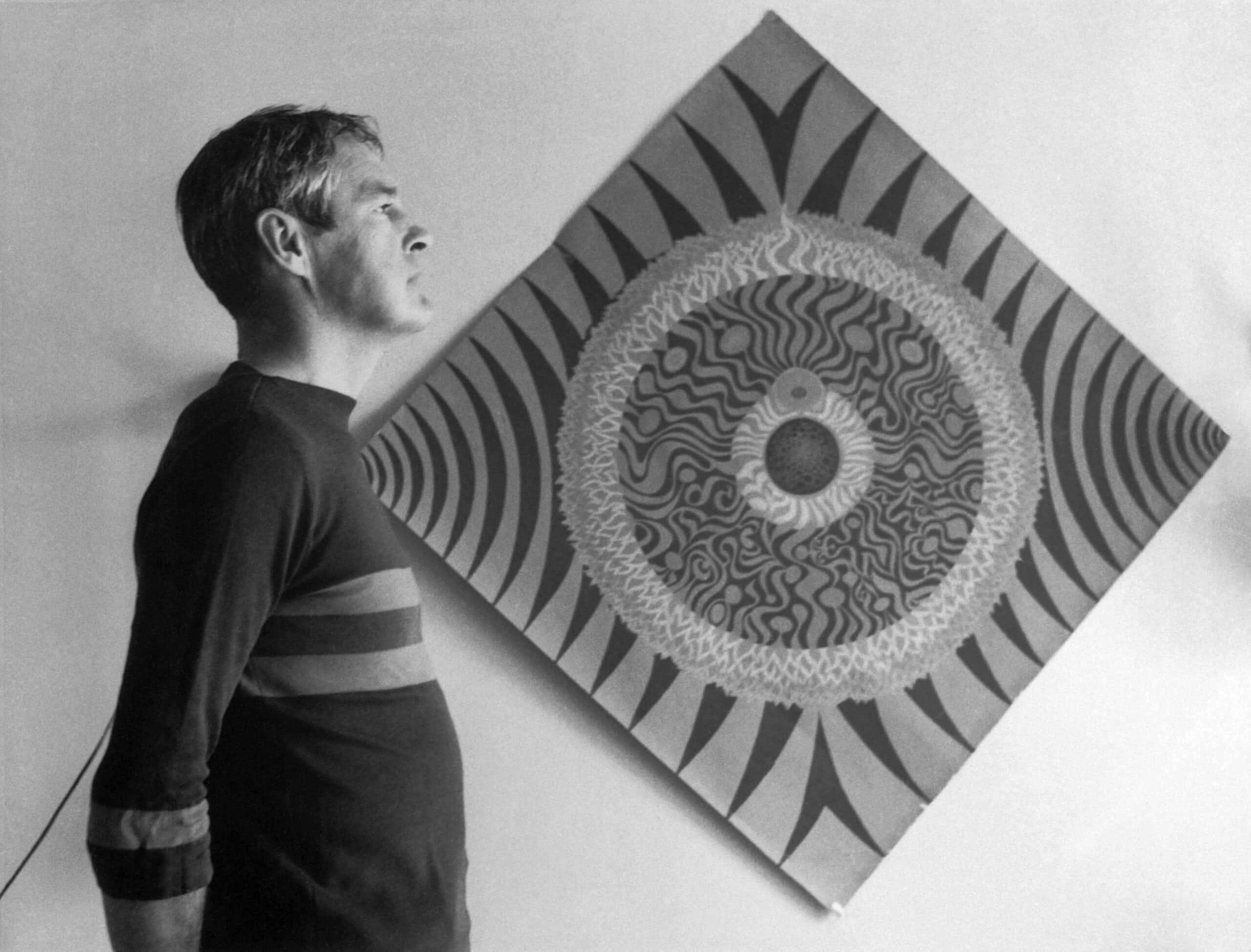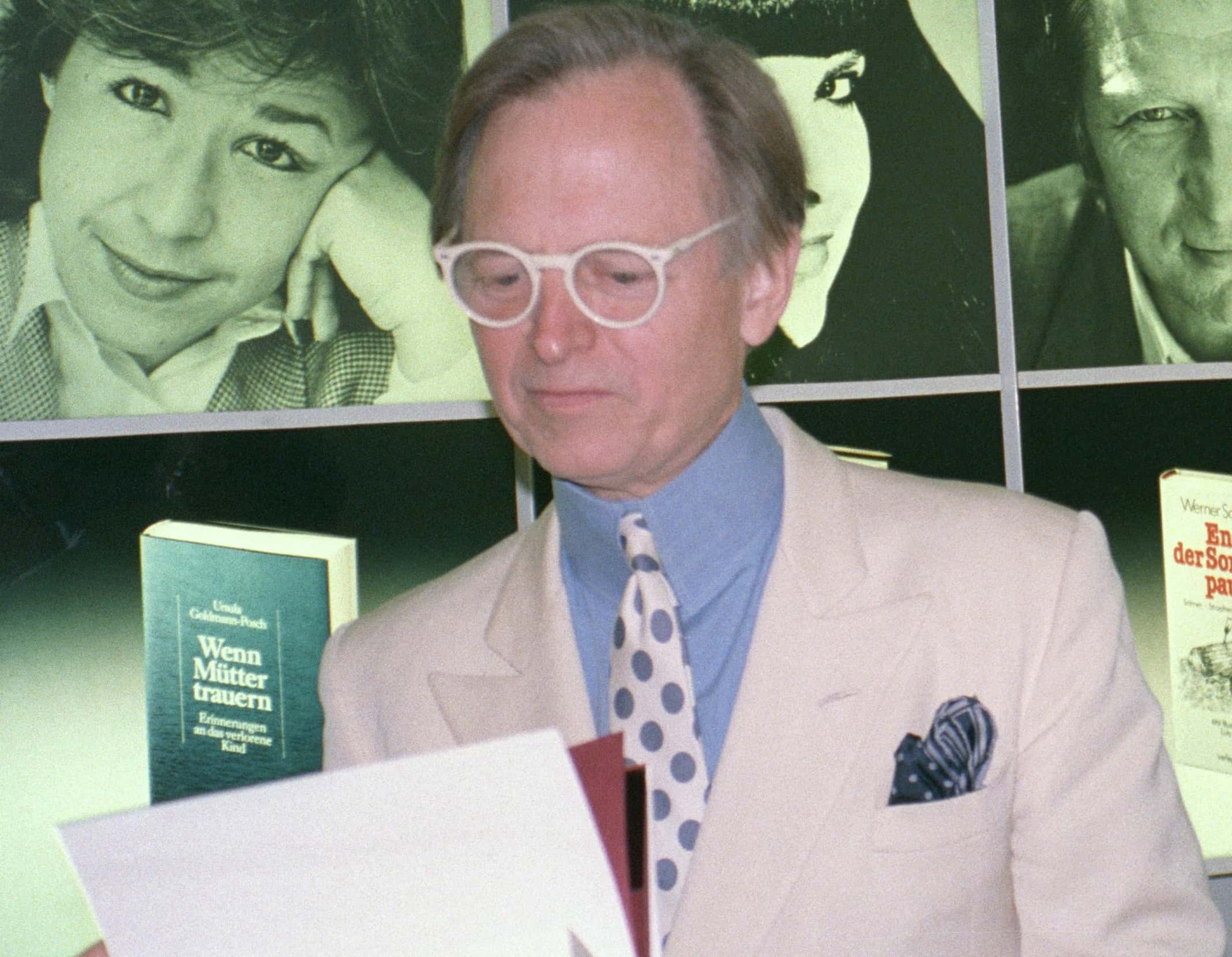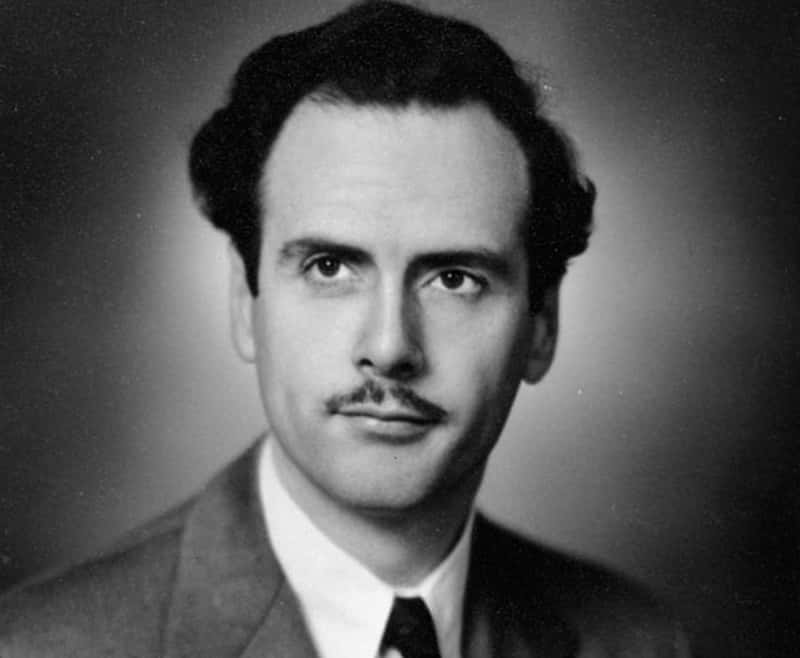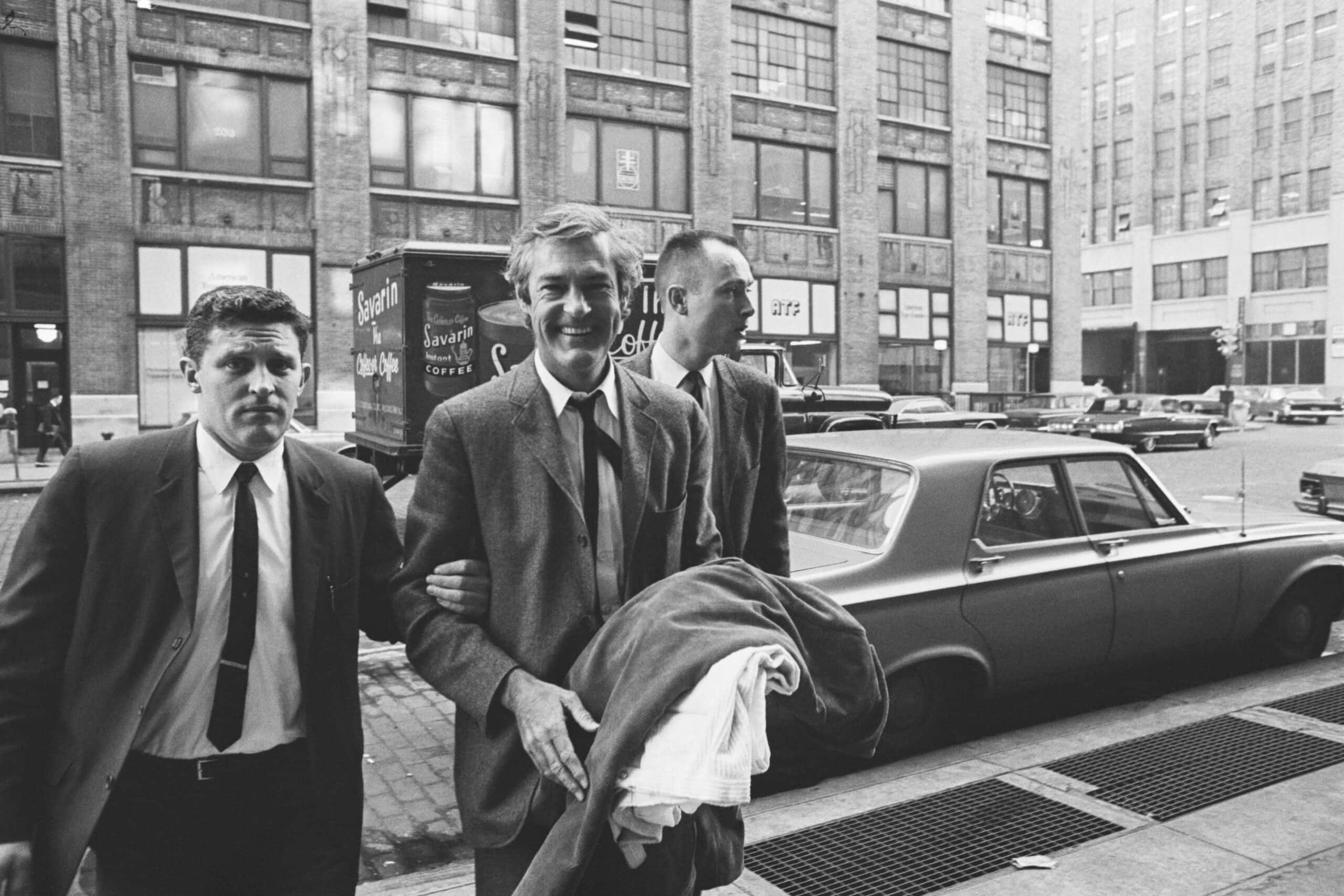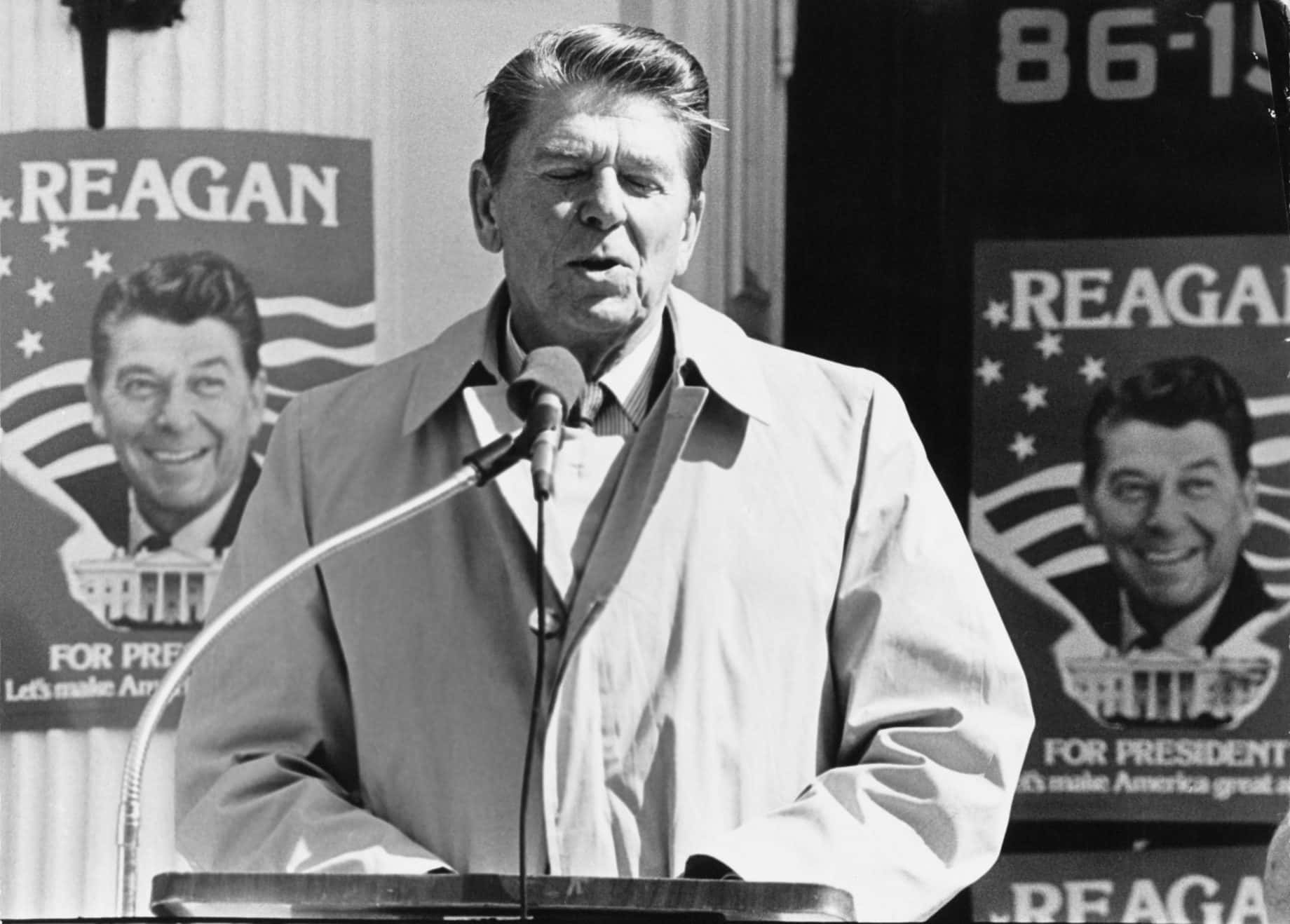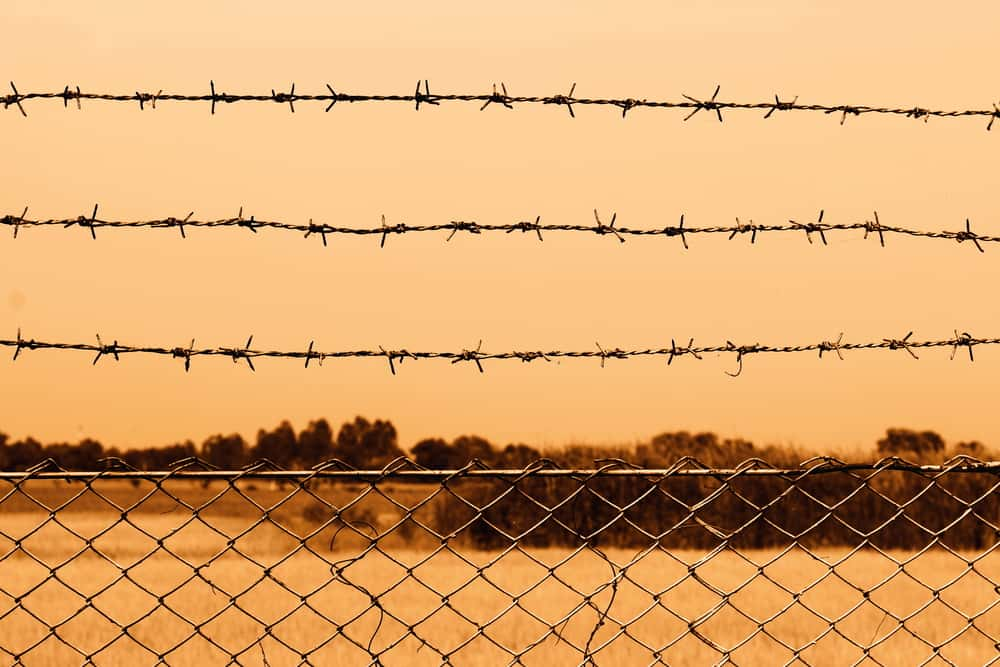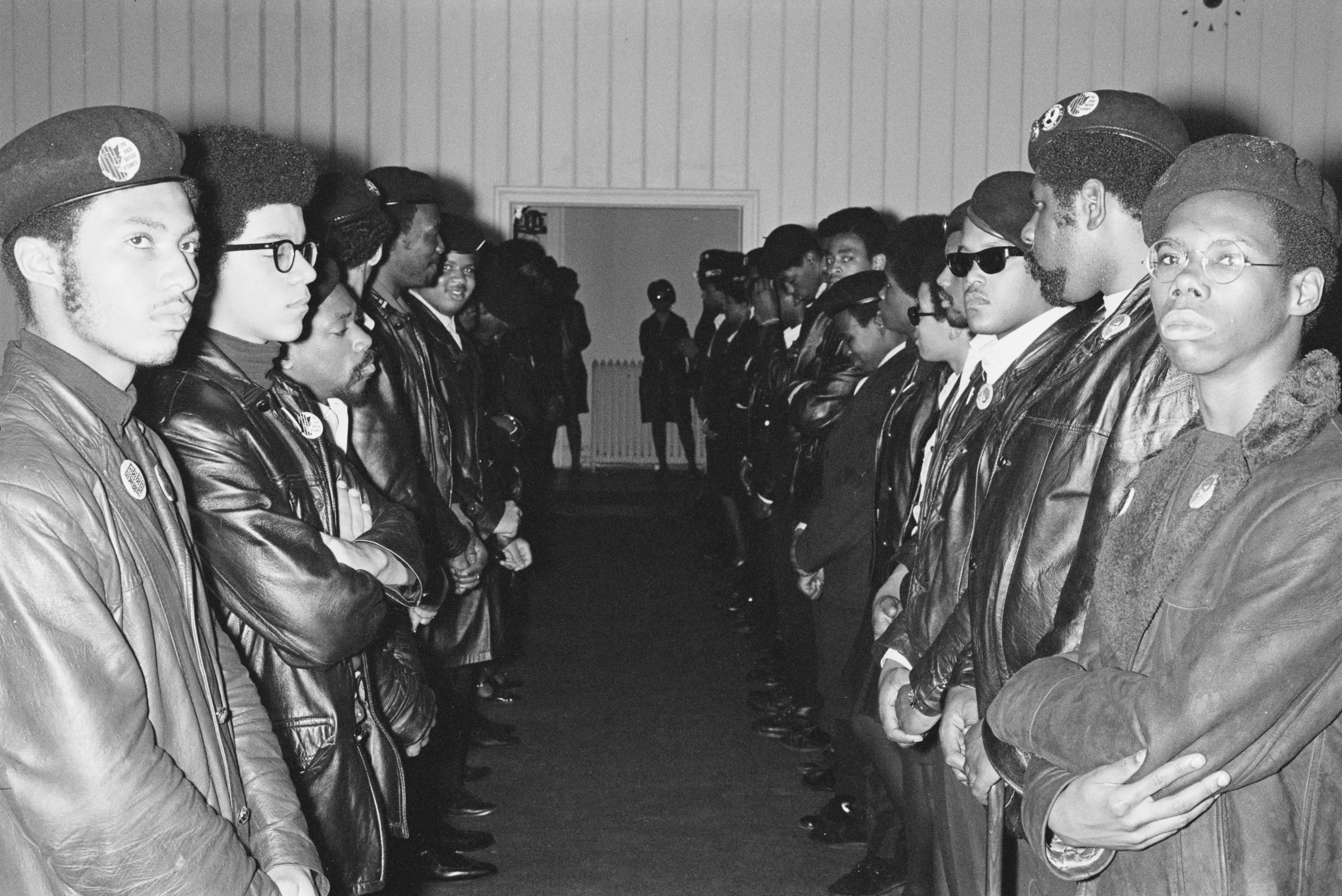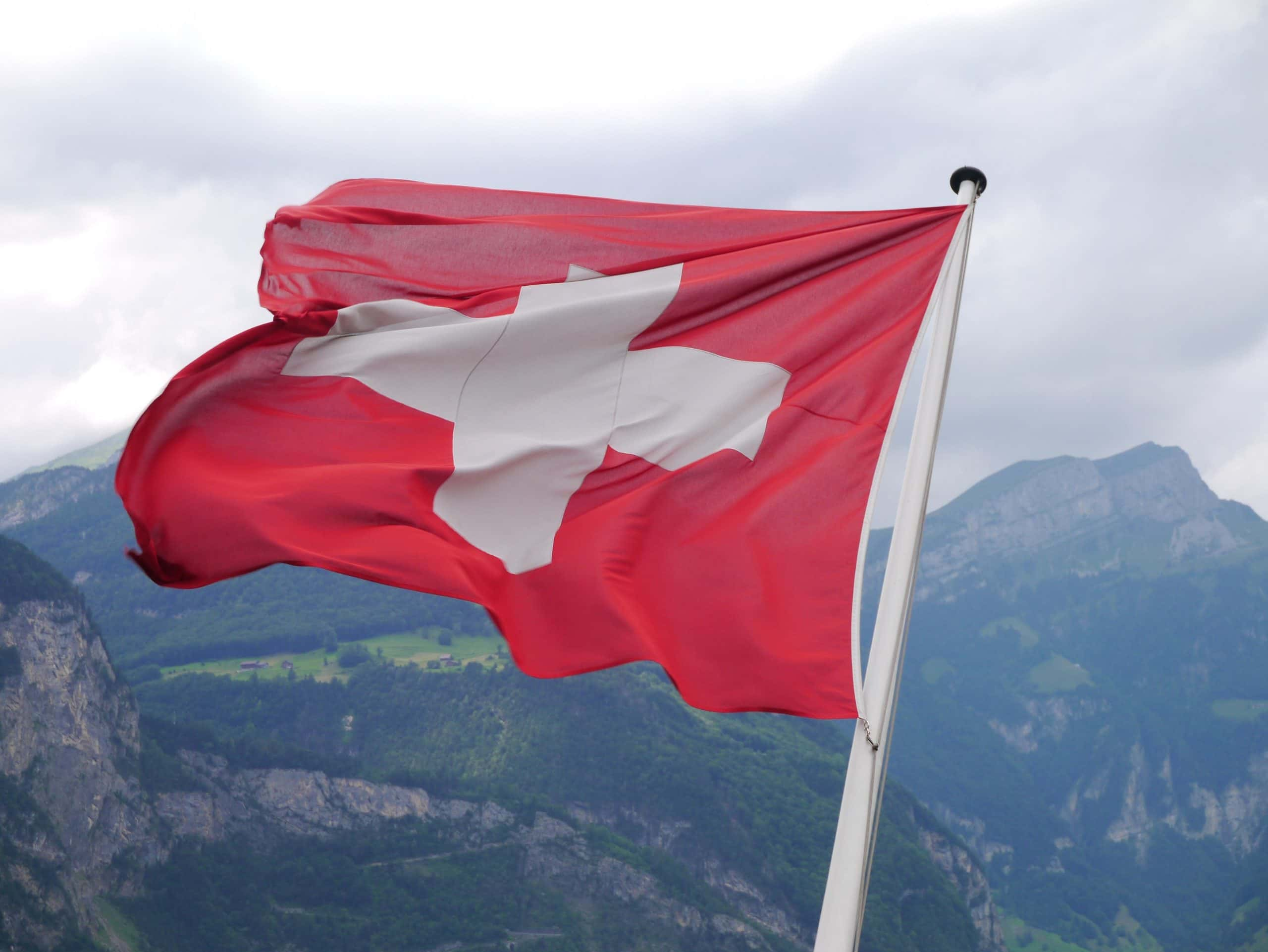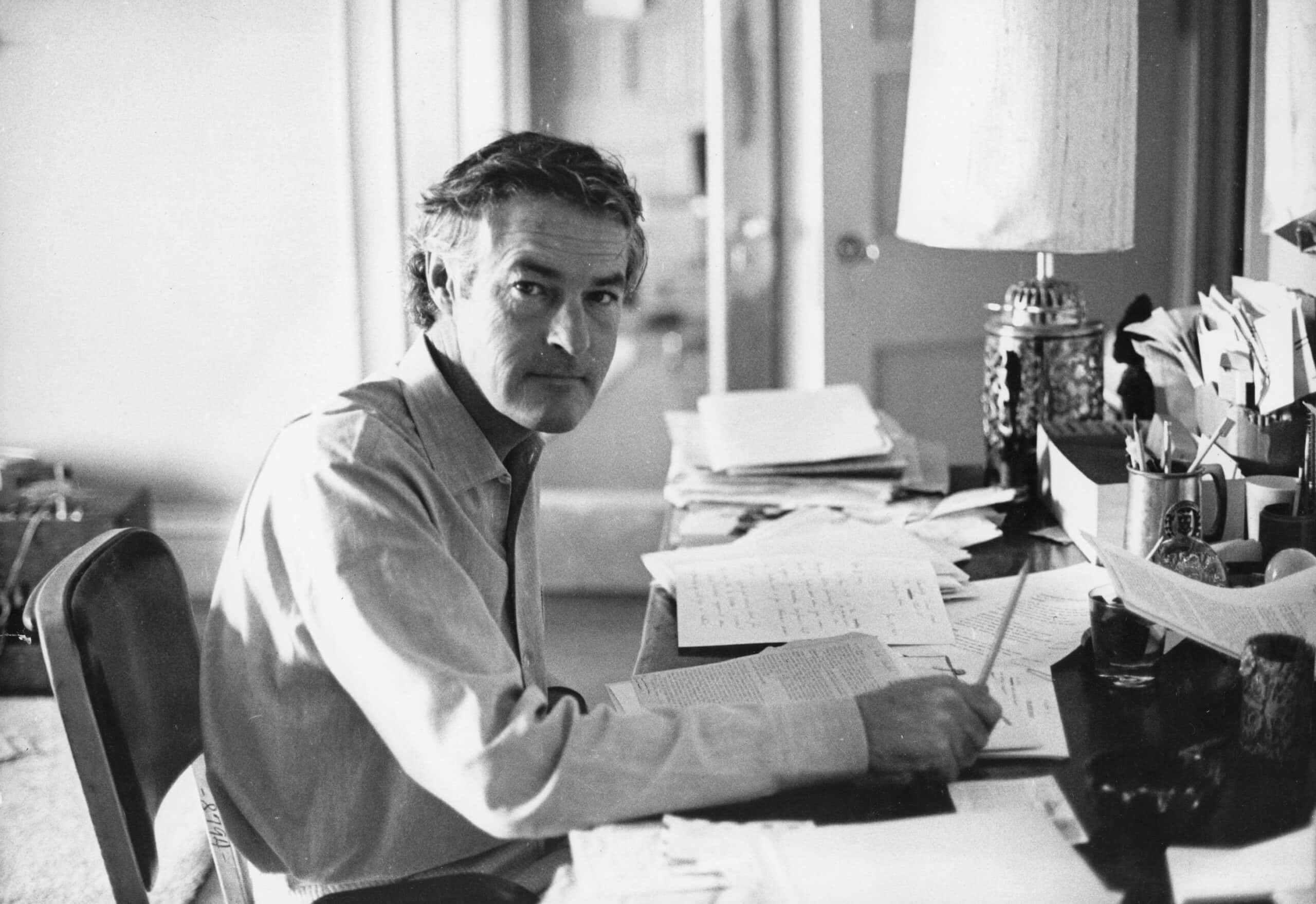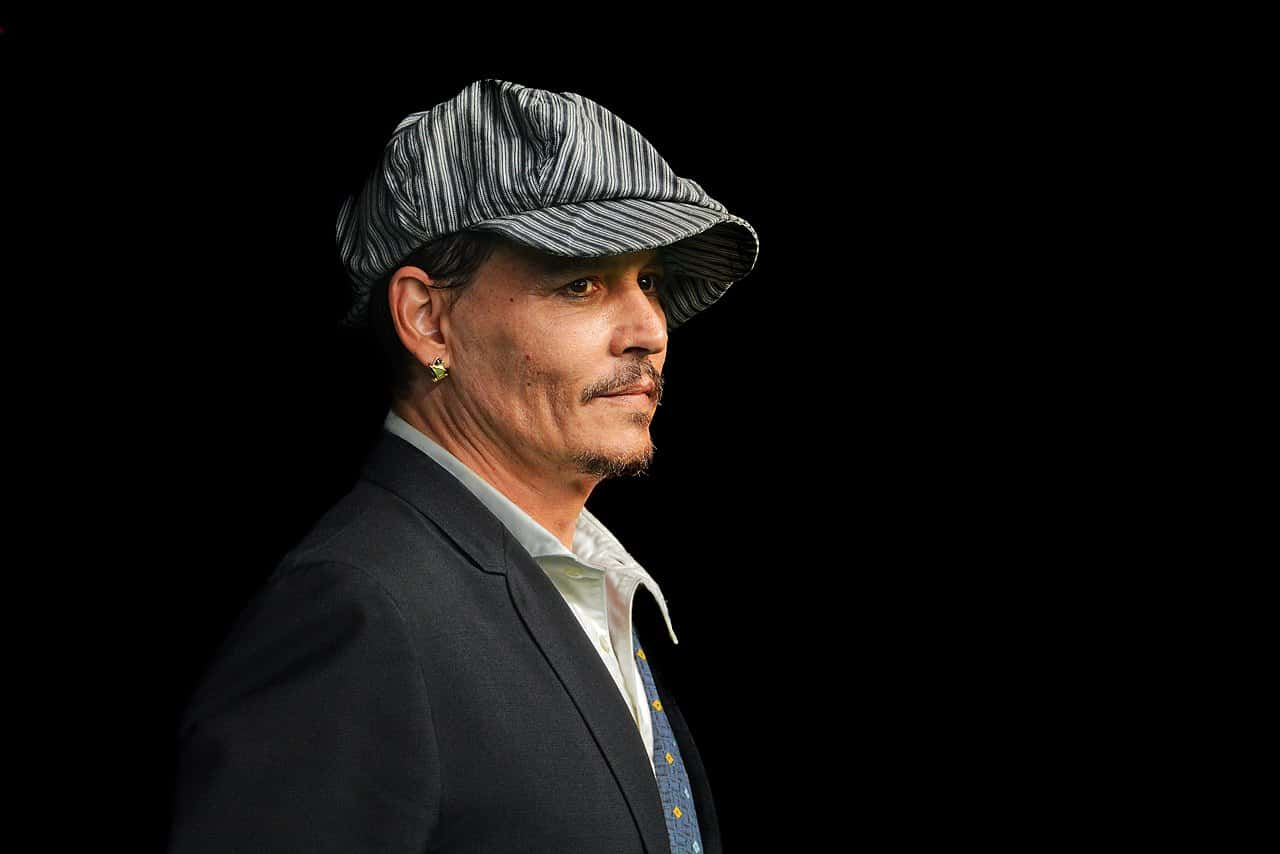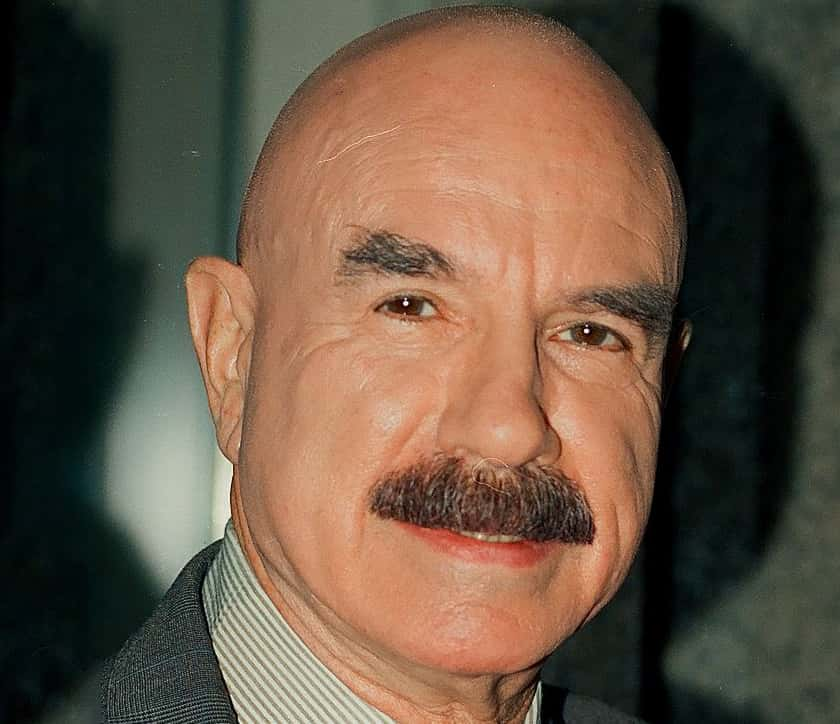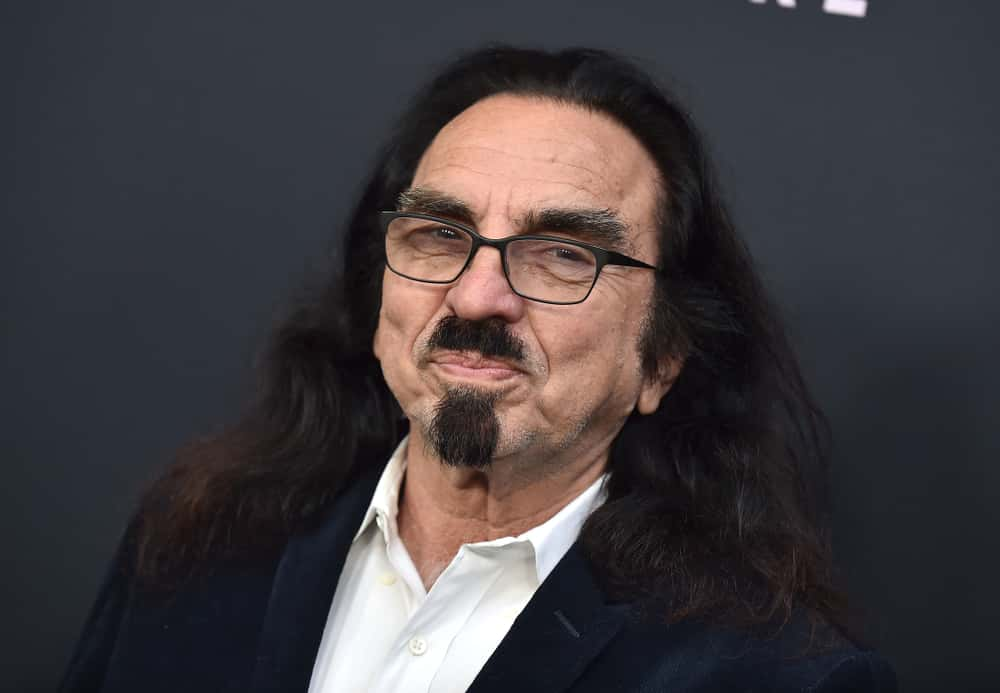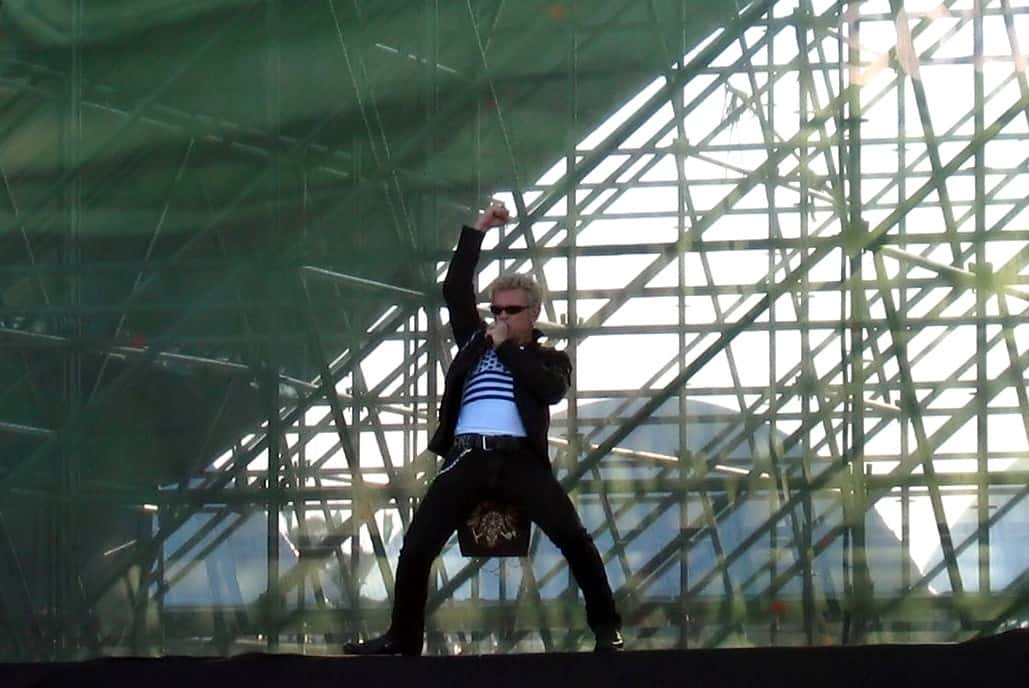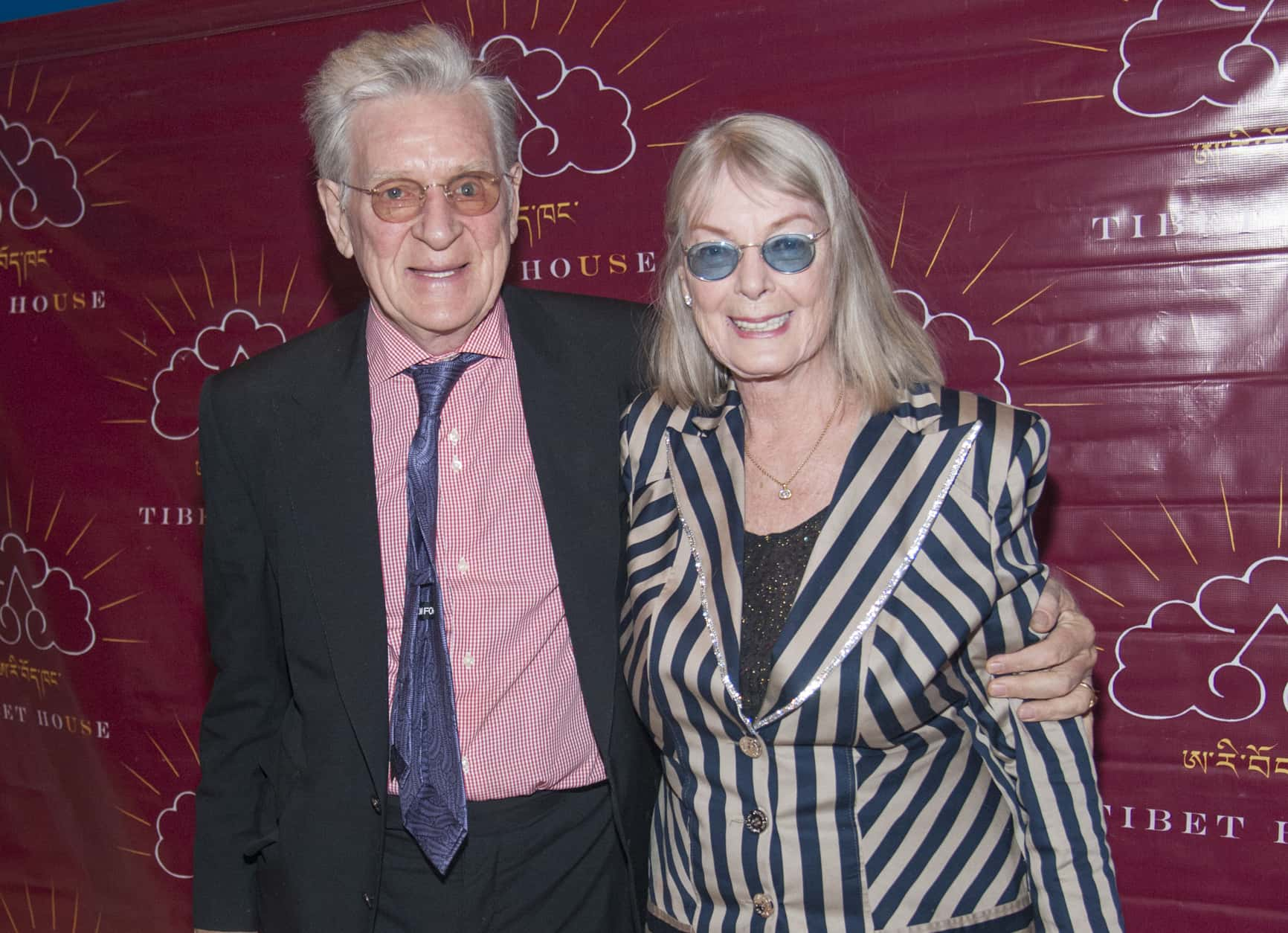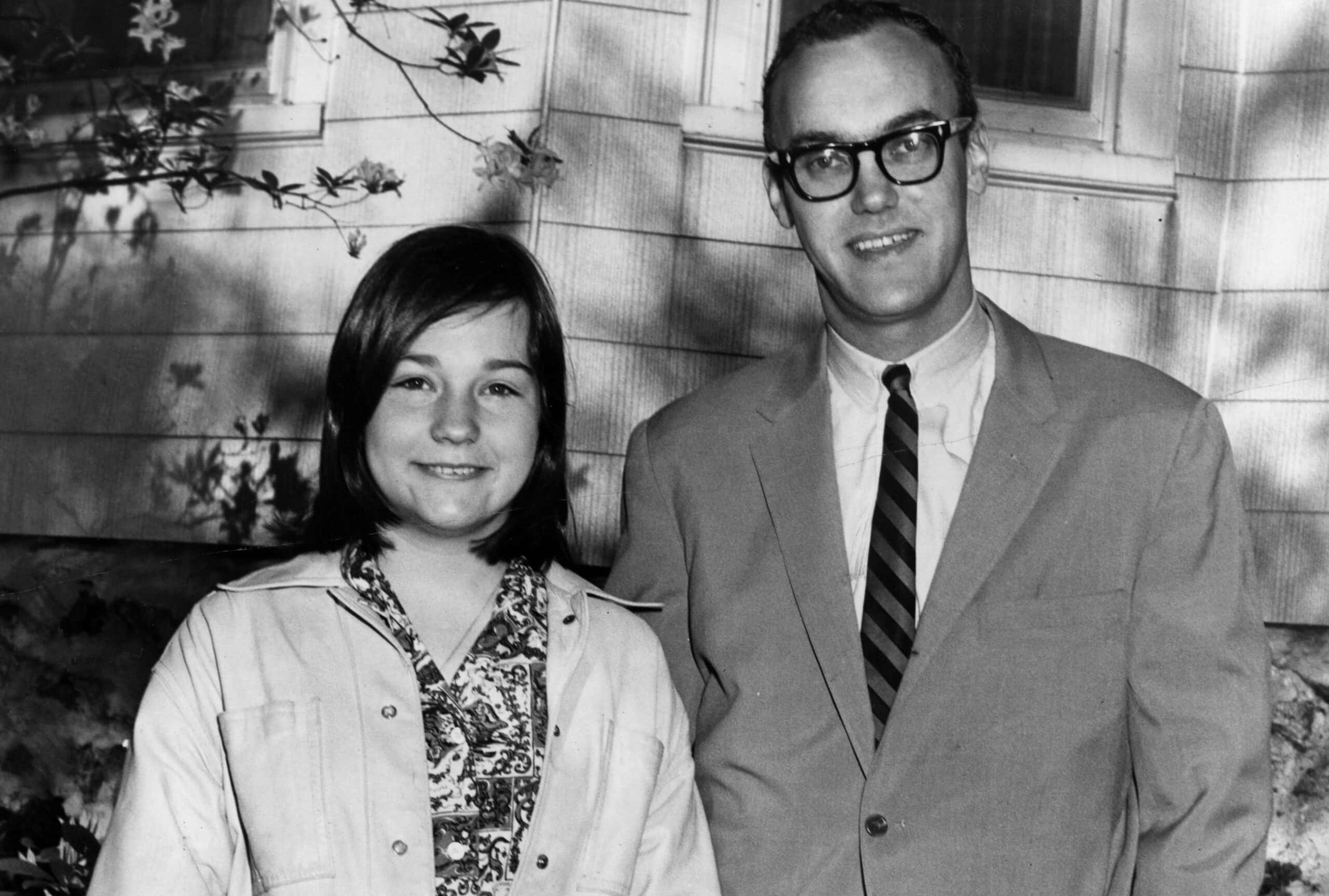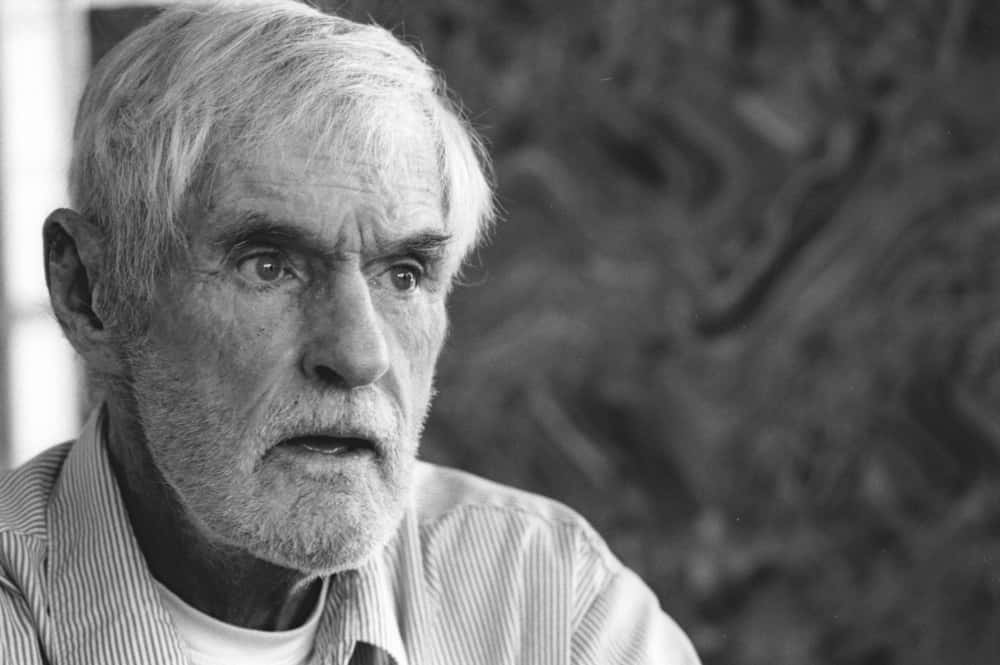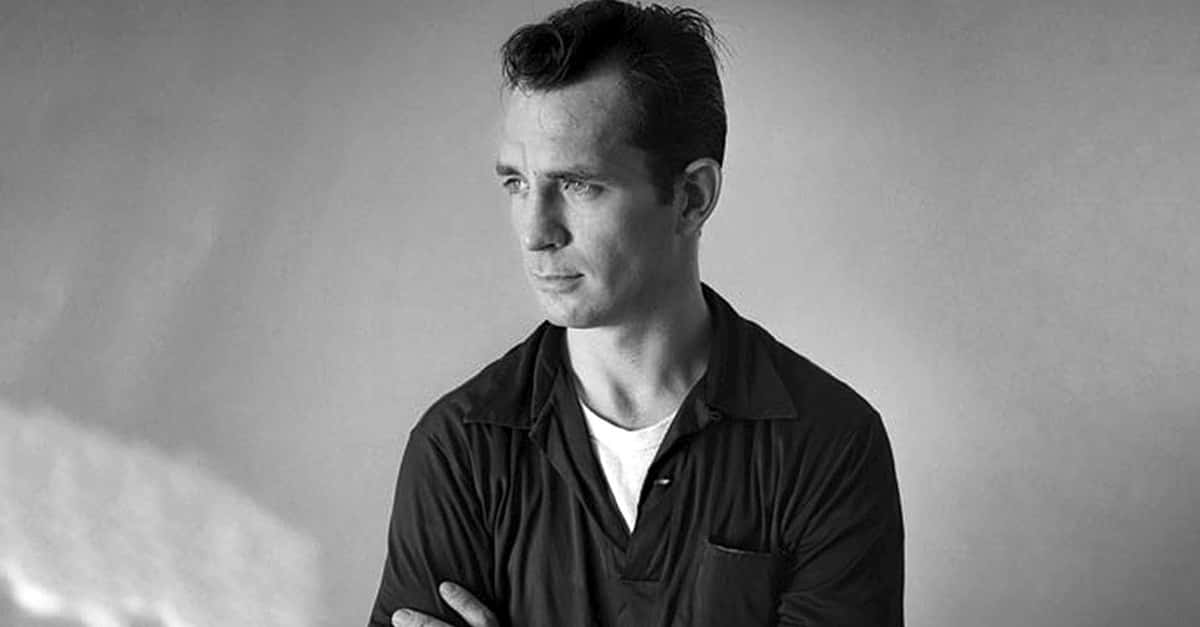Richard Nixon called him “the most dangerous man in America." However, Timothy Leary saw himself a little differently: he was a scientist, hounded for “violating Newtonian and religious laws.” From the early 1960s until his passing in 1996, Timothy Leary served as the public face of LSD. His vocal endorsement of psychedelic substances made him an icon of the counterculture, drawing the attention of law enforcement officers and rock stars alike. But while he became famous for hobnobbing with the Beatles, Leary maintained a serious, influential career as a psychologist. Here are 42 psychedelic facts about Timothy Leary.
1. Dry Humor
Timothy Leary was born in Springfield, Massachusetts, on October 22, 1920. Leary would later claim that he was conceived the night before prohibition went into effect. Obviously, his wasn’t an eye-witness account, but Leary’s math checks out: the 18th Amendment, prohibiting the manufacture, sale, and transport of alcohol in the United States, became law on January 16, 1920—a little more than nine months before his birth.
2. Like Pulling a Tooth
Leary’s father, Timothy Leary, Sr., was a dentist who left the family when Timothy, Jr., was just 14.
 Dying to Know: Ram Dass & Timothy Leary (2014), CNS Communications
Dying to Know: Ram Dass & Timothy Leary (2014), CNS Communications
3. The Silent Treatment
After high school, Leary enrolled in the prestigious West Point Academy, but his time there was unpleasant. He struggled with authority, and had a hard time fitting in. Leary was once accused of drinking, in violation of the school’s code of conduct. Leary denied the accusations, and was eventually cleared of any wrongdoing, but his fellow students gave him the silent treatment until he resigned.
4. Justice for All
Leary’s unfair treatment at West Point got so bad that at one point, a United States senator, David I. Walsh, launched a personal investigation. Walsh forced a hearing at West Point, which concluded with West Point’s Honor Guard promising to stop shunning Leary. Leary would later call it “the only fair trial I’ve had in a court of law.”
5. “I Thought It Was Co-Ed!”
Timothy Leary left West Point and enrolled at the University of Alabama, where he developed an interest in psychology. Although he had an easier time at Alabama than he had had at West Point, Leary was still expelled from the university for spending the night in the women’s dorms.
6. Missing the Boat
WWII was raging, and so getting expelled from the University of Alabama exposed Leary to the draft. The military placed Leary with a cargo crew bound for the Pacific, but a chance encounter with one of his old psychology professors led to him being reassigned to the psychology department of an army hospital in Butler, Pennsylvania. Leary spent the rest of the conflict there, climbing to the rank of sergeant.
7. Unlikely Honors
Timothy Leary earned a Good Conduct medal for his service during WWII.
 Dying to Know: Ram Dass & Timothy Leary (2014), CNS Communications
Dying to Know: Ram Dass & Timothy Leary (2014), CNS Communications
8. The Suburbs
Following WWII, Leary married Marianne Busch. Together, they had a son and a daughter. After a series of residencies and clinical appointments, Leary accepted a job with the University of California in San Francisco and settled down into a perfectly ordinary, middle-class life. He had become, as he put it, one of “several million middle-class, liberal, intellectual robots.”
 Dying to Know: Ram Dass & Timothy Leary (2014), CNS Communications
Dying to Know: Ram Dass & Timothy Leary (2014), CNS Communications
9. Til the End
Leary’s homelife was not as rosy as it seemed. Both he and Marianne were drinking heavily, and Leary was frequently unfaithful. When Marianne confronted him about his affairs, Leary’s reply was utterly heartless. He told her: “That’s your problem.” And his brutal treatment had disturbing consequences. The marriage came to a tragic end in 1955 when Marianne died by suicide.
 Dying to Know: Ram Dass & Timothy Leary (2014), CNS Communications
Dying to Know: Ram Dass & Timothy Leary (2014), CNS Communications

History's most fascinating stories and darkest secrets, delivered to your inbox daily.
10. South of the Border
In 1959, Leary accepted a lecturing position at Harvard. A colleague, Anthony Russo, had been to Mexico to study the use of psilocybin (“magic mushrooms”) in religious ceremonies. The research intrigued Leary; in August of 1960, he traveled to Mexico to witness the ceremonies firsthand, and to partake himself. The event would change his life.
11. Going Straight
When Leary returned, he devoted his studies to the effects of psychedelic substances on human subjects. For one trial, the Concord Prison Experiment, Leary dosed 32 inmates on Concord Prison in Massachusetts with LSD. The ongoing study showed that just 25% of subjects returned to prison after their release—the average recidivism rate for inmates at Concord was higher than 60%.
12. IFIF…
Not only did Leary begin researching psychedelics, he also became a public advocate. In 1962, Leary and a colleague, Richard Alpert, founded an organization called the International Federation for Internal Freedom—the IFIF—to raise awareness about the consciousness-expanding qualities of these substances.
13. The Naughty Professor
Though many of Leary’s experiments demonstrated benefits to psychedelics use, there were serious and valid concerns about his ethics. Leary pressured his own students to sign up, and would often take LSD with them during the experiments. Leary’s failure to meet even minimal standards of ethical experimentation led to dire consequences.
These included an investigation by the Massachusetts Department of Health and the cancellation of all further experiments. Leary and his collaborator Richard Alpert were fired from Harvard in 1963.
 Dying to Know: Ram Dass & Timothy Leary (2014), CNS Communications
Dying to Know: Ram Dass & Timothy Leary (2014), CNS Communications
14. House Party
Leary was forced to leave Harvard, but he was determined to continue his research. His work had attracted the attention of some wealthy supporters, most notably Peggy, Billy, and Tommy Hitchcock, heirs to one of the biggest family fortunes in America. The Hitchcocks bought Leary a 64-room mansion in Millbrook, New York, where Leary would spend the next four years writing, researching, and partying.
15. Cult Following
At Millbrook, Leary began restructuring the IFIF, renaming it the Calista Foundation, and using it to host group therapy sessions and trips. He renamed it again, in 1966, to the League for Spiritual Discovery (conveniently abbreviated as LSD). Leary began to position his League of Spiritual Discovery as a religious movement, its chief sacrament the taking of LSD.
16. The Two Commandments
Leary’s religion had two commandments: one, “Thou shalt not alter the consciousness of thy fellow man,” and two, “Thou shalt not prevent thy fellow man from altering his own consciousness.”
17. Oh, Brother
Not only had Leary founded his own religion with the League for Spiritual Discovery, but another group, the Brotherhood of Eternal Love, began recognizing Leary as their spiritual leader. The Brotherhood disbanded in 1972, when dozens of their followers were apprehended in a raid.
 Dying to Know: Ram Dass & Timothy Leary (2014), CNS Communications
Dying to Know: Ram Dass & Timothy Leary (2014), CNS Communications
18. Drinking the Kool-Aid
Author Tom Wolfe visited Millbrook. He book about the experience, The Electric Kool-Aid Acid Test, revolutionized modern non-fiction writing, and was an early example of “New Journalism.”
19. A Regrettable Remark
It wasn’t all sunshine and rainbows. In a 1966 interview with Playboy, Timothy Leary claimed that LSD could “cure” homosexuality. He would later retract the claim.
20. The Ad Campaign
Leary’s admonition to “Turn On, Tune In, Drop Out” became a famous slogan among hippies and soon made its way on to buttons, badges, and protest signs. It was actually Canadian media studies pioneer Marshall McLuhan who coined the phrase. McLuhan had also suggested a jingle for Leary: “Psychedelics hit the spot, 500 micrograms—that’s a lot!”
21. Know Your Rights
In 1965, Leary and his family traveled to Mexico. On their way back, US Customs officers found a small amount of pot in Leary’s car. Leary was apprehended and sentenced to 30 years in prison, but successfully appealed the charge. Leary argued that the law used to charge him, the Marihuana Tax Act of 1937, could not be applied with forcing him to incriminate himself (a violation of the Fifth Amendment). Leary’s argument was so persuasive, that the law was overturned.
22. On the Run
In 1970, Leary decided to run for governor of California. Among his opponents was future president Ronald Reagan. Leary’s campaign was short-lived, however. It ended when a judge once again sentenced him to prison on illicit substance charges.
23. Not Their Best Work
John Lennon wrote Leary’s campaign song. “Come Together” hit #1 on American charts and appears on the Beatles’ Abbey Road album. Despite its popularity, Lennon didn’t think it could be an effective campaign song: “It’s all gobbledygook…you couldn’t have a campaign song like that, right?”
24. He’s Got All the Answers
Leary’s campaign was brought to a halt when a judge handed down a 20-year prison sentence for possession. When he went to jail, staff gave him a series of personality tests to determine what would be his job while in prison. What the guards did not know was that Leary himself designed many of these tests. One was even called the Leary Interpersonal Behavior Inventory.
 Dying to Know: Ram Dass & Timothy Leary (2014), CNS Communications
Dying to Know: Ram Dass & Timothy Leary (2014), CNS Communications
25. Passing with Flying Colors
Leary used his familiarity with the personality tests to his advantage. He deliberately chose answers which would land him a job in the prison gardens, which were low security. After a few months tending the flowers, Leary jumped the prison fence and escaped.
26. Going Underground
Leary’s followers in the Brotherhood of Eternal Love paid $25,000 to radical group the Weather Underground to take Leary out of the United States. This kicked off a period of globetrotting for Leary and his family, as they hopped from Algeria to Switzerland, to Afghanistan.
27. Be Inconspicuous
While in Algeria, Leary stayed with exiled Black Panther Eldridge Cleaver. Leary would later claim the Black Panthers held him hostage, but the Black Panthers denied this. Instead, they said, Lear was placed on “house arrest” because of his flamboyant, increasingly attention-seeking lifestyle.
28. Staying Neutral
Timothy Leary then escaped to Switzerland. A notorious arms dealer offered to house them, in exchange for all of Leary’s future earnings. When that proved an inadequate solution, Swiss authorities apprehended Leary. The Swiss government refused to extradite him to the United States, however. As soon as he was released, Leary fled to Afghanistan.
29. Con Air
Afghanistan had no extradition treaty with the United States. Nevertheless, through a series of backroom deals, Leary was finally forced onto a plane and returned to his home country. Leary was immediately apprehended, and his bail set at $5 million.
 Dying to Know: Ram Dass & Timothy Leary (2014), CNS Communications
Dying to Know: Ram Dass & Timothy Leary (2014), CNS Communications
30. Helter Shelter
It took the jury just two hours to convict Leary for his prison escape. They also tacked on five more years to his original 10-year sentence. A judge sent him to the legendary Folsom Prison, where guards placed him in a cell next to that of another counterculture icon: Charles Manson.
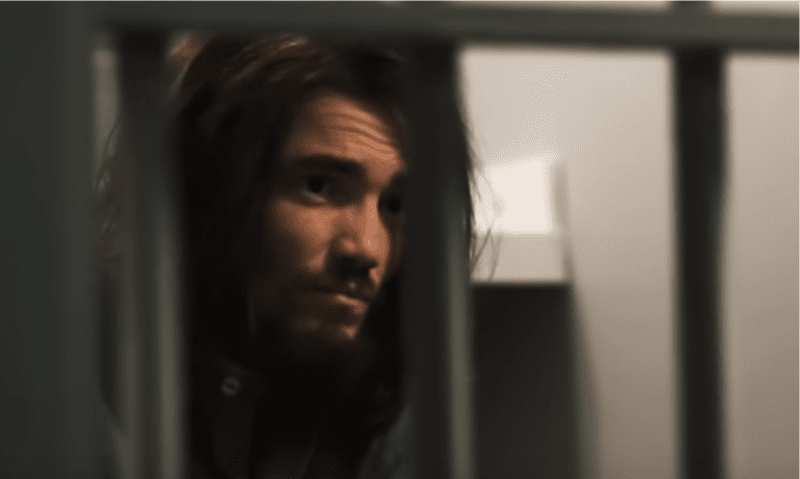 House Of Manson, Gravitas Ventures
House Of Manson, Gravitas Ventures
31. Crazy Eight
Leary continued to write and publish on psychological subjects. In 1977, he released Exo-Psychology, which introduced his eight-circuit model of consciousness. According to Leary, the mind develops in eight stages. The first four of these deal with material concerns—survival, social relationships, and so forth. The remaining four are advanced forms of consciousness, accompanied by enlightenment and psychic powers.
32. Famous Friends
Upon his release from prison in 1976, Leary returned to his life as a psychedelic celebrity. In edition to resuming his public lectures, he opened his Laurel Canyon home to some of Hollywood’s most hippy-friendly stars. Leary counted among his close friends Dan Aykroyd, Johnny Depp, Susan Sarandon, and Red Hot Chili Peppers guitarist John Frusciante.
33. The Great Debate
Toward the end of the 70s, Leary struck up an unlikely friendship with the former assistant district attorney of Millbrook, New York, G. Gordon Libby. By now, Libby was a household name for his role in the Watergate Scandal. The notorious duo went on tour together, debating a variety of issues, with Leary taking a left-wing stance and Libby arguing from a conservative position.
34. Comic Relief
In 1979, Leary wrote a comic book based on his philosophy. It was co-written by George DiCaprio, the father of actor Leonardo DiCaprio. Leary would later officiate George DiCaprio’s 1995 wedding to Peggy Farrar.
35. Punked
Leary served as a consultant on Billy Idol’s 1993 concept album Cyberpunk. The much-derided concept album deals with subjects of technology and human consciousness. Leary also provided spoken word tracks to the album.
36. The Godfather
Timothy Leary was the godfather of actress Winona Ryder. Ryder’s father, Michael Horowitz, was a seller of counterculture literature, and so built a close friendship with Leary.
37. Stranger Than Pulp Fiction
In 1964, Leary married fashion model Nena von Schlebrügge. The marriage lasted a year. After their divorce, von Schlebrügge married Robert Thurman. Their daughter, Uma, would grow up to become a famous actress.
38. It Was All an Act
After hanging out with all those Hollywood celebrities, Leary caught the acting bug himself. In 1993, he landed a cameo role as a call-in psychiatry patient on the NBC sitcom Frasier. In 1997, he appeared as a scientist in the science fiction film Convincing Ada.
 Nice Dreams (1981), Columbia Pictures
Nice Dreams (1981), Columbia Pictures
39. Sad Story
In 1990, law enforcement apprehended Leary’s daughter Susan for murdering her boyfriend. A judge deemed that Susan was mentally unfit to stand trial and sentenced her to the Patton State Hospital. Susan died by suicide before making it to the hospital.
40. Asking the Real Questions
In January 1995, doctors diagnosed Leary with terminal cancer. Dying became a regimented program for Leary: he maintained a blog, finished one last book, and arranged to have his final moments videotaped. Leary passed on in May of 1996. His final words were “Why not?
41. Rocket from the Tombs
Timothy Leary scientists to cryogenically freeze his body, but the process is costly. Though the documentary of his passing, Timothy Leary’s Dead, shows his frozen head, it's actually just a model. The truth is just as exciting, however. Unable to have himself frozen, Leary had his remains cremated and blasted into space.
42. Ashes to Ashes
Following Leary's passing, his family put aside some small portions of his ashes. They then gave them to close friends and family. In 2015, Susan Sarandon brought a little bit of Leary to Burning Man.


